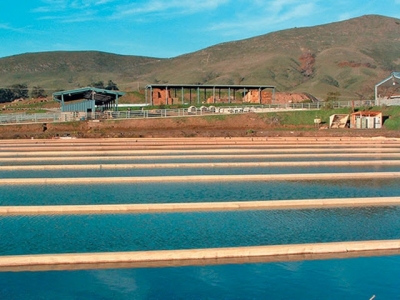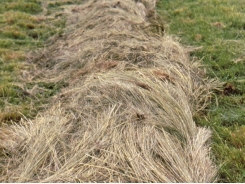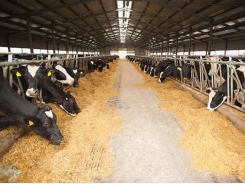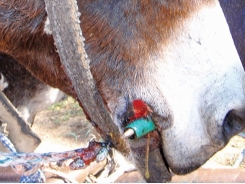Using cow power to make your dairy farm self-sufficient

Manure can be used to produce biogas, electricity and fertiliser. In the process, you will recycle nutrients and increase profits while reducing pollution and greenhouse gas emissions.
An anaerobic lagoon at a dairy in the US. Photo: KJKOLB
Approximately 10% of cow dung and urine is deposited in the dairy yard and lanes daily.
This figure is lower in an extensive operation, because more is deposited on the pasture.
In an intensive system, the percentage will tend to be higher than 10%. Here, manure and slurry are usually flushed into a pond, where a natural crust forms, partially sealing the pond and further encouraging anaerobic fermentation. After the slurry has matured, it can be used to fertilise pasture camps via a spreader. This is an effective re-use of nutrients, especially phosphorus.
Biogas: clean power on tap when you need it
A portion of the nutrients (mostly nitrogen, carbon and sulphur) escapes as ‘biogas’, which contributes to air pollution and greenhouse gas emissions.
The good news, though, is that a dairy can use biogas directly as fuel or to generate power for lights, machinery or ovens.
Biogas, which is free of pathogens and odour, is produced by the natural fermentation of organic material in the absence of oxygen. The process, called anaerobic bacterial fermentation, breaks down 40% to 65% of the organic raw material.
Hay and grain silage, and vegetable, agricultural and kitchen waste are also suitable for biogas production.
After the biogas has been extracted, the remaining fermented raw materials (digestate) can be used as fertiliser or sold.
Heat produced during the fermentation process can also be captured in coolant fluid, and used for heating greenhouses and domestic buildings via a piped, circulating system.
Do your homework
If you are considering installing an anaerobic digester system on your dairy farm, you will need to calculate the trade-off between the savings on input costs and the expense of infrastructure such as a manure spreader or a biogas plant.
It is also important to decide whether you would prefer a ‘hot’ or ‘cool’ system, as this will affect the bacterial population, biogas yield and efficiency. A hot system is higher-yielding, but more expensive to maintain, and there is a greater risk of ammonia release at higher temperature.
Ammonia inhibits the growth of biogas-producing bacteria. In a dairy farm that uses slurry, the ammonia concentration must be kept below 80mg/ℓ to reduce ammonia inhibition of bacteria.
Source: Hawkins HJ, Stanway R:The Sustainable Dairy Handbook, Nestlé Printers, Bryanston, SA.
Có thể bạn quan tâm
Phần mềm

Phối trộn thức ăn chăn nuôi

Pha dung dịch thủy canh

Định mức cho tôm ăn

Phối trộn phân bón NPK

Xác định tỷ lệ tôm sống

Chuyển đổi đơn vị phân bón

Xác định công suất sục khí

Chuyển đổi đơn vị tôm

Tính diện tích nhà kính

Tính thể tích ao hồ




 Supplemented pasture systems may boost beef fatty acid…
Supplemented pasture systems may boost beef fatty acid…  How to keep a donkey healthy
How to keep a donkey healthy